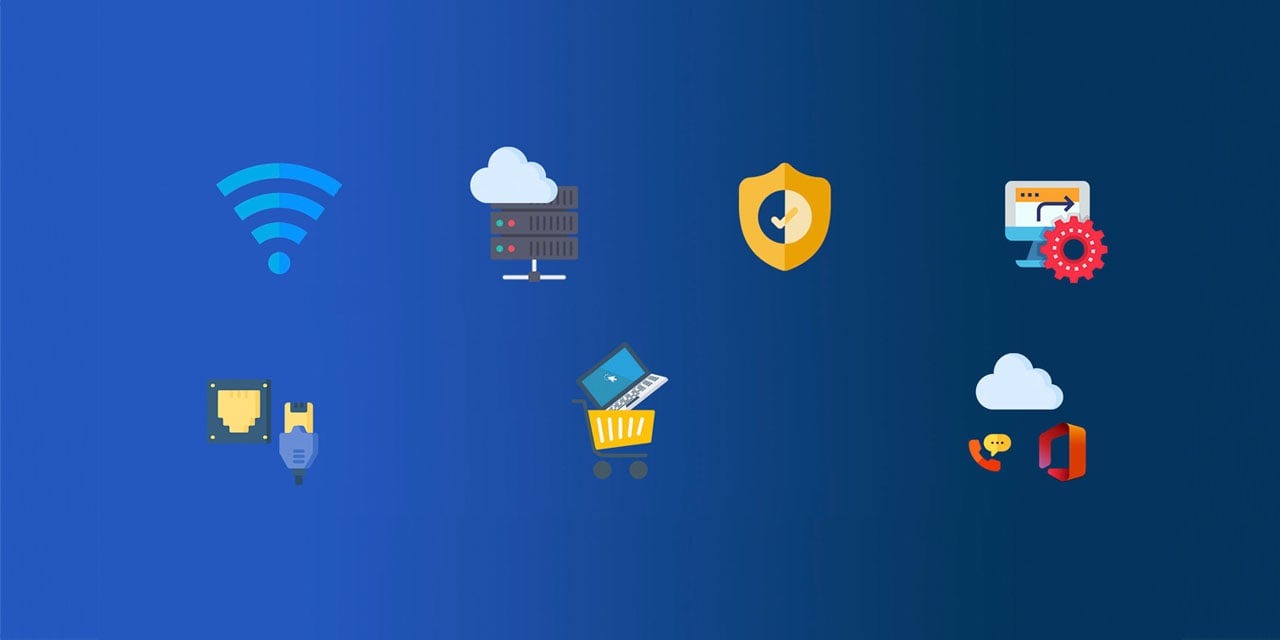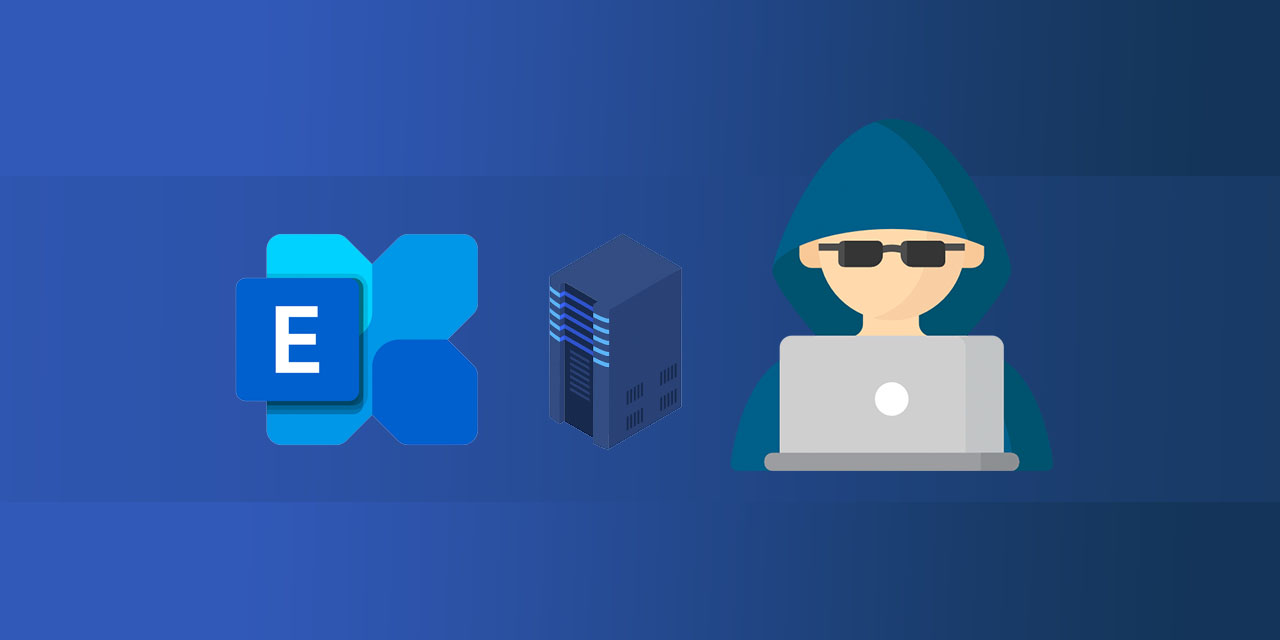What's not included in IT support?
IT companies offer a variety of IT services. These can be split into two main areas: IT support and IT project work. In this article, I list the most...

The pandemic has been catalyst to many businesses switching to the cloud. Adoption of cloud services is not slowing. It is predicted to rise by a further 18.4% during 2021. Yet, switching to the cloud is not always straightforward. When business-critical applications that run on legacy 'on-premise' platforms seem to work OK, the decision to switch to the cloud is complex. This is especially true for small or medium sized businesses where the business case and ROI needs to be clearly defined.
This guide will help to weigh up the pros and cons of cloud vs on-premise. The decision to move to the cloud should be guided by your IT strategy, budget, resources and organisational readiness.
Business leaders may consider a permanent move to the cloud for several reasons including:
The cloud has many strengths and opportunities. It can provide the platform to modernise IT infrastructure and reach long-term business goals to have IT infrastructure that is fully integrated, resilient and secure. It can enable a seamless flow of data across every system and application. Also, enable automation and a great customer and employee experience.
Let’s take a balanced view and consider the business case for cloud vs on-premise. In this guide we cover:
What’s the difference between cloud and on-premise?
Cloud pros
Cloud cons
What is better: cloud or on-premise?
Next steps
Benefit working with a managed IT service provider to implement cloud
Cloudfare have created a really good definition: " 'The cloud' refers to servers that are accessed over the Internet, and the software and databases that run on those servers. Cloud servers are located in data centers all over the world. By using cloud computing, users and companies don't have to manage physical servers themselves or run software applications on their own machines."
Microsoft says "cloud computing is the delivery of computing services – including servers, storage, databases, networking, software, analytics and intelligence – over the Internet (“the cloud”) to offer faster innovation, flexible resources and economies of scale. Typically, you only pay for cloud services you use, helping you lower your operating costs, run your infrastructure more efficiently and scale as your business needs change." We don't completely agree with Microsoft's perspective on lowering price, when considering an SMEs operating cost, but we will look at price in more detail further in the article.
On-premise means that hardware and software is located on your premises. This is a traditional IT set-up. It could be a server based in your office, or a bought license or copy of software that resides within your business' office/premises.
The core differences between cloud and on-premise are their location and where responsibility lies:
The location of your infrastructure, platforms and software is the fundamental difference between cloud and on-premise. On-premise means your IT infrastructure, server, hardware and applications are located on-site. They are housed inside your premises.
Cloud means it is external to your business and accessed via the internet. Most technology can be cloud based today, for example your server, emails, CRM or accountancy programs - the data is always stored, managed and processed online.
On-premise means the business has ownership and responsibility for any infrastructure, platforms or software located within your office. You are responsible for updates, repairs and upgrades.
For cloud, the vendor, e.g. Microsoft, Google, Amazon, Adobe, HubSpot takes care of everything. Your business is not responsible to upkeep or upgrade - it is all include in the cost of the cloud subscription.
All you need is an internet connection to access cloud applications and systems. Work from home and work from anywhere (café, gym) is the new norm. Many businesses moved to the cloud during lockdown to enable their team to access key business systems from home. Cloud offers a long-term solution for remote working.
With the cloud, there are no limitations to capacity and it can be increased as your business needs it. Common on-premise problems such as availability issues and outages (due to reaching maximum capability limit) are avoided with cloud. Also, you only pay for the storage that you use. To upgrade or downgrade is simple and does not need an IT specialist to work on-site. Changes to your plan are done within hours and days, and can be completed remotely.
In contrast, on-premise is limited and is less flexible. When you purchase an on-premise server it has a set capacity. If you max that storage capacity, you have to decide how much extra capacity you need. To implement an on-premise storage upgrade is time consuming. The project would need to be well thought-out and planned. It requires ordering extra equipment and an IT technician to install the upgrade on-site. It takes time and effort to organise and facilitate a storage upgrade on-site.
There is flexibility to scale up/upgrade or downsize quickly with the cloud. A plan upgrade/downgrade or new license can be added very quickly. Notice to remove or withdraw from a service is often just one month. In comparison, on-premise is more difficult to scale up and there is not an option to quickly downgrade. Once an investment has been made, you're bought in.
There is usually no large upfront capital expense (CapEx) cost with the cloud. Instead, the price is calculated is per license, with ongoing monthly fees, though annual subscriptions can be cheaper.
This differs from on-premise. Instead, there is a sizeable upfront investment to purchase the hardware/software. As well as the upfront cost, businesses should also take into account the cost of employing an in-house IT expert to install and maintain the equipment. Consider the cost to recruit, manage and train an IT expert compared to outsourced help.
The ongoing monthly fees for cloud services will cover support and maintenance costs. Monthly fees are consistent and predictable, making budgeting that bit easier. There are no ‘surprise’ emergency maintenance bills, which can occur with on-premise. Upgrades, back-ups and support are all included in the cost of the cloud.
For SaaS applications, payment is based upon the number of employees that use the software. While some vendors have a minimum of 12-month fixed terms, many have monthly rolling contracts. Cloud enables you to instantly switch services on and off – upgrade and downgrade at the click of a button. Many offer free trials, so there is huge flexibility to try out new technology and see what works best to fit your business needs.
Cloud telephone systems are typically much cheaper, for example, there are no charges for calls made between offices. You don’t necessarily need a ‘work phone’ either, making remote working that much easier.
The likelihood of having an outage reduces with the cloud. On-premise experience outages if:
Many IT administration activities can be automated on the cloud. Traditional IT often requires a member of staff to authorise new equipment and resources, such as firewalls. This kind of authorisation process is absolutely necessary but tends to be slow. Cloud uses automation and self-service to perform the same tasks. Parameters or ‘guardrails’ can be set, so that only authorised actions are made.
Cloud computing can reduce your electricity bill and is better for the environment. Lower C02 emissions are due to the efficiency of the vendor’s large-scale servers.
When you use a cloud service provider, you have no equipment on-site. The cloud service provider takes care of all maintenance costs, removing all responsibility from the business. With on-premise, you are responsible for server hardware and software, storage, data back-ups and disaster recovery.
Cloud is fast to implement. It can take a matter of hours to implement a new service. For a server replacement, the new equipment would first need to be ordered. Delivery lead time may be a week. Then, the old and new server would need to be physically moved. You would need to ensure IT help is available to install and configure the upgrade.
Investing in an on-premise server can be a big upfront investment for a small business or start-up. However, the cloud enables even small businesses to access to the perks of resilient servers and applications. Historically, this would have entailed a huge capital cost or only be viable for large businesses. Security is also accessible to small businesses - you don’t have to be an enterprise to have a high level of security today.
Everyone feels fury when the internet goes down. Zoom calls freezing over lockdown, need I say anymore! When your work relies on a steady internet connection, there is the risk of an outage due to a slow or failed internet/Wi-Fi connection.
It is worth checking with an IT specialist that your internet connection and speed is up to scratch before committing to the cloud.
Cloud enables a degree of customisation, however, there is more scope with on-premise. Whether an SME needs this type of customisation is unlikely in our experience, however, on-premise does enable you to take complete control of how you're set up and configure connections. We would always advise that an IT expert configures your settings. The National Cyber Security Centre warns that the more customisation you add, the more chance of the configuration being less secure too, so make sure you take into account this factor.
Despite there being no upfront costs, over time, the cloud will cost more. This is a burden that all SMEs face. The market is transitioning to cloud platforms, with the likes of Microsoft gearing their service offering to purely cloud-based solutions. The latest On-premise Exchange Server incident demonstrates why they are making this permanent move to the cloud.
Some highly regulated industries specify on-premise backup as part of their compliance, such as finance and healthcare.
Having data located and backed up within your office can provide peace of mind. You can choose how to configure and set up exactly how you want. This is helpful for businesses that have complex IT infrastructure and many legacy systems. This is not particularly relevant to smaller sized businesses where IT is not very complex. But, if it’s about the ability to control what is yours, then this is a benefit of on-premise. You can also dictate when to upgrade and you own it – so everything is under your control.
You should also take into account the security implications. The UK National Cyber Security Centre warns: “There’s a temptation to try and control as much of your IT as possible, in the belief that the associated vulnerabilities and security are known and understood.“ Don’t assume that on-premise and more control equates to better security.
This won't be relevant to most small businesses, but when IT infrastructure is based upon legacy systems – moving to the cloud isn’t always simple. Businesses often need to plan and create a road map to move forward, being pragmatic with their approach in switching systems over to the cloud, taking one step at a time.
We have listed many of the pros and cons to provide a comparison. For many of our clients, we have found the cloud to be the best option to support meeting their long-term business goals. For most small businesses, on-premise won't be an option due to vendors moving towards cloud services. Get in touch to see if the cloud could be right for you to make an informed, evidence-backed decision.
It’s not surprising that many businesses take a hybrid approach when switching over to the cloud. Making certain elements of your business cloud, while holding back on other areas until the time is right. We recommend moving payroll and HR to the cloud as the first steps if you haven’t already.
As a general guide, your business should follow these steps and create a technology roadmap. The steps will enable you to understand what cloud technology you need and when it is best to implement them.
What does your business need today?
How do you intend to use the cloud?
Identify the risks and disadvantages.
What are your strategy and long-term vision?
What technology do you need to meet your vision and projected growth?
Identify data that will be processed and stored in the cloud.
Understand the legal and regulatory implications; GDPR, Data Protection Act etc.
Understand the cloud providers security claims.
Identify what can be mitigated and if you need more security measures.
Review your security risks every 6-12 months.
Create a plan – what technology do you need over the next 12 months, 3 years, 5 years and 10 years?
What skills do we need to make it happen?
What is our budget?
Configuring your IT infrastructure, hardware and software can be complex. Always consult with your head of departments to work out your overarching business needs and utilise your IT department/outsourced IT/cybersecurity experts to ensure the right technology is in place.
The UK Government National Cyber Security Centre (NCSC) recommend partnering with a managed service provider (MSP) when moving to the cloud. We are an MSP and provide IT support services and cybersecurity in the West Midlands. There are many MSPs around the country that can help you to adopt the cloud.
We would advise taking advantage of an MSP’s experience, as the NCSC suggests:
“Managed services tend to be configured, designed, operated, and monitored more effectively than any customer designing their own service could achieve. This includes solving hard security challenges (such as data encryption, access control, and integrated monitoring).
“This is because managed services can normally bring more specialist expertise to focus on a single problem. When customers try to tackle the same problem, it’s just one small aspect of a much bigger system and one job amongst a huge list of other tasks.
“By using managed services, particularly in cloud services, the provider’s expertise can be used as a commodity.”
We have migrated many small businesses to the cloud. We are very experienced in this area and can recommend what we have found to be the best cloud services for data and commercial or supporting areas of your business; including CRM, sales, marketing, accounting and HR.
For more information and advice get in touch or book time with one of our experts.

IT companies offer a variety of IT services. These can be split into two main areas: IT support and IT project work. In this article, I list the most...

As a Managed Service Provider (MSP), our mission is to guide companies in making transformative decisions that align with their growth and...

The on-premise Microsoft Exchange Server vulnerability has revitalised the ongoing debate; Cloud vs Traditional IT. Watch Mark's video summarising...